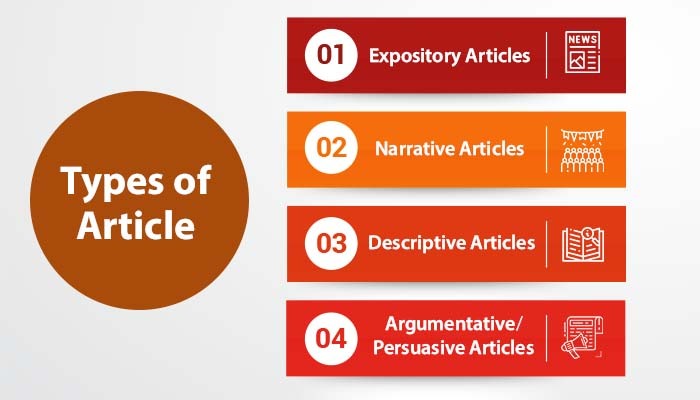Just How Articles Contribute to Quality in Writing
The application of posts is often overlooked, yet their influence on quality in writing can not be understated. Definite and uncertain articles serve distinct functions, directing the visitor towards a nuanced understanding of the message. While "the" indicates specificity, "a" and "an" unlock to originalities. Misuse of these write-ups frequently leads to obscurity, inevitably obscuring the author's intent - articles. Recognizing the nuances of short article use is vital for attaining quality, however what particular methods can writers employ to harness their full potential?
The Function of Articles
By assigning nouns as definite or indefinite, articles lead the reader's understanding of the subject matter, distinguishing between known and unknown entities. The certain post "the" indicates a certain noun, while the indefinite short articles "a" and "an" suggest a basic or non-specific referral.
Integrating posts properly improves the comprehensibility of writing, permitting authors to share their designated significances with better accuracy. articles. Misuse or noninclusion of articles can lead to uncertainty, causing complication for the viewers. As an example, specifying "I saw pet" lacks clearness and uniqueness, whereas "I saw a canine" or "I saw the dog" communicates unique meanings.
Moreover, write-ups add to the rhythm and flow of sentences, affecting readability. A strong understanding of article usage is important for effective communication, making certain that the nuances of meaning are preserved and the message is supplied clearly.
Kinds Of Articles
Understanding the different sorts of articles is fundamental to mastering their usage in composing. Articles can be classified mostly into 2 kinds: guaranteed and indefinite short articles. The precise write-up "the" defines a specific noun that is recognized to the visitor. Stating "the publication" indicates that both the audio speaker and audience are aware of which specific book is being referenced. This accuracy aids to guide the visitor's emphasis and improves clearness.
In comparison, uncertain short articles, such as "a" and "an," refer to non-specific nouns. When one says "a book," it indicates any kind of book, not one specifically. This usage is crucial when introducing brand-new ideas or products to the discussion, as it provides a general framework without constraining the reader to a certain recommendation.
Additionally, posts can likewise communicate nuances such as quantity and originality. As an example, "an apple" recommends any apple, while "the apple" might suggest that it is the only apple in the context. Recognizing these distinctions allows writers to effectively adjust write-ups for better clearness and precision in their interaction.
Articles and Uniqueness

On the other hand, indefinite posts like "a" or "an" present nouns in a more basic feeling, suggesting that the noun might not recognize to the reader. "a book" recommends any publication, leaving the specifics open to analysis. This difference is essential for reliable writing, as it influences just how info is conveyed and comprehended.
Common Mistakes With Articles
Clarity in composing can typically be compromised by common blunders with write-ups. One common mistake includes the abuse of certain and indefinite posts.

Improving Quality Through Articles
Reliable communication hinges on the accurate use posts, which can substantially improve clarity in creating. Articles, consisting of "a," "an," and "the," act as indicators that lead visitors with the message. Their right application not Web Site just clears up which noun is being referenced yet also establishes the specificity and generality of the topic.
Making use of guaranteed and indefinite articles appropriately can aid stay clear of uncertainty. Claiming "the vehicle" specifies a certain automobile, while "an auto" refers to any kind of automobile in basic. This distinction is crucial in making certain that the visitor recognizes the desired meaning without confusion. Additionally, regular use posts adds to the total circulation of composing, enabling for smoother shifts in between ideas.
In scholastic and professional writing, quality is paramount. Abuse of articles can lead to misconceptions and false impressions, detracting from the author's integrity. Writers ought to pay cautious interest to write-up use, as this small yet effective facet of language can dramatically enhance the clarity of their interaction. Eventually, the effective use of short articles changes creating from plain words right into a meaningful and accessible message.
Conclusion
In verdict, posts are essential tools in composing, considerably improving clearness and precision. The appropriate use of definite and uncertain posts permits efficient communication by comparing specific and basic references. By understanding and using the rules controling posts, authors can reduce obscurity and enhance the general readability of their work. Mastery of post usage inevitably adds to a more meaningful and engaging creating design, promoting better understanding for readers.